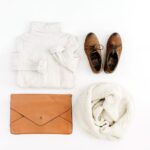The Glamour of the Roaring Twenties
Ah, the 1920s—an era of jazz, prohibition, and unparalleled fashion revolution! Dubbed the Roaring Twenties, this decade marked a time when style took center stage, reflecting the boldness and freedom of the age. But what exactly set roaring 20s fashion apart? It wasn’t just about glitz and glamour; it was about breaking societal norms, redefining gender roles, and embracing modernity. From dazzling flapper dresses to dapper suits, let’s unravel the essence of this unforgettable fashion era.
The Foundations of Roaring 20s Fashion
To truly understand the appeal of 1920s style, it’s essential to explore the cultural and societal shifts that influenced it.
1. The Influence of World War I
After World War I, societal roles shifted dramatically. Women who had taken on men’s jobs during the war were reluctant to return to restrictive norms. This newfound independence was echoed in their clothing choices—goodbye corsets, hello freedom!
2. Jazz and the Youth Culture
The Jazz Age wasn’t just about music; it was a lifestyle. Young men and women sought adventure, fun, and self-expression, and their fashion reflected this vivacious energy.
3. Hollywood’s Golden Touch
Movies were all the rage in the 1920s. Hollywood stars like Clara Bow and Rudolph Valentino became trendsetters, inspiring everyday fashion choices with their larger-than-life on-screen personas.
Iconic Elements of Roaring 20s Fashion
Women’s Fashion: Flappers, Fringe, and Freedom
The 1920s were all about empowerment, and women’s fashion led the charge.
- Flapper Dresses: Short, sleeveless, and often adorned with beads or fringe, these dresses were the ultimate party attire. They symbolized rebellion against traditional femininity.
- Drop-Waist Silhouettes: Unlike the hourglass shapes of the Edwardian era, 1920s dresses had loose fits and low waistlines, allowing for unrestricted movement.
- Feathered Accessories: From feathered headbands to boas, these accessories added a touch of drama.
- Bold Makeup: Red lips, kohl-lined eyes, and bobbed hair completed the look, showcasing confidence and flair.
Men’s Fashion: Sharp, Sleek, and Sophisticated
Gentlemen of the 1920s embraced tailored suits and effortless charm.
- Three-Piece Suits: These were a staple for formal occasions, often paired with pocket watches and silk ties.
- Tuxedos for Evenings: A black tuxedo with a crisp white shirt became the go-to evening attire.
- Casual Tweeds: For daytime wear, men opted for tweed jackets, flat caps, and loafers.
- Accessories Galore: Bow ties, suspenders, and hats added a finishing touch of elegance.
Fabrics and Patterns of the Roaring Twenties
Fashion wasn’t just about cuts and silhouettes—it was about texture and design too.
Popular Fabrics
- Silk and Satin: These luxurious fabrics were common for evening wear.
- Velvet: Favored for its rich and opulent look.
- Cotton and Wool: Practical options for casual and workwear.
Trending Patterns
- Art Deco Prints: Geometric shapes and bold lines were a nod to modernity.
- Stripes and Plaids: Classic patterns that added sophistication.
Accessories: The Final Flourish
No roaring 20s outfit was complete without the perfect accessories.
For Women
- Cloche Hats: Close-fitting and chic, these hats became a signature look.
- Long Beaded Necklaces: Often pearl, these necklaces were draped for added glamour.
- Mary Jane Shoes: Stylish yet comfortable, these shoes were perfect for dancing the Charleston.
For Men
- Fedoras: A timeless hat choice for gentlemen.
- Pocket Squares: A dash of color or pattern in the breast pocket made all the difference.
- Leather Gloves: Essential for chilly evenings.
The Cultural Significance of Roaring 20s Fashion
Fashion in the 1920s wasn’t just about aesthetics—it was a statement.
- Women’s Liberation: Short dresses and bobbed hair were declarations of independence and defiance.
- Economic Prosperity: The post-war boom allowed people to indulge in luxury fashion.
- Global Influence: The exchange of ideas and trends between Europe and America created a vibrant, cross-cultural style.
Why the Roaring 20s Still Inspire Today’s Fashion
From red carpets to runway shows, roaring 20s fashion continues to influence modern design.
- Flapper-Style Dresses: Modern brands often reinterpret these classics with contemporary twists.
- Art Deco Jewelry: The clean lines and bold shapes of the 1920s remain timeless.
- Gender Fluidity: Just as the 1920s blurred traditional gender roles, today’s fashion embraces androgyny.
FAQs About Roaring 20s Fashion
- What defined roaring 20s fashion for women?
Flapper dresses, drop-waist silhouettes, bold makeup, and accessories like cloche hats defined women’s fashion of the era. - How did men’s fashion evolve in the 1920s?
Men embraced sharp tailoring, three-piece suits, and accessories like fedoras and pocket squares, showcasing sophistication. - Why is 1920s fashion still relevant today?
The era’s emphasis on freedom, boldness, and modernity resonates with contemporary fashion trends. - What were popular 1920s fabrics?
Silk, satin, velvet, and wool were widely used, reflecting both luxury and practicality. - How did the Jazz Age influence fashion?
The Jazz Age’s energy and youth culture inspired bold styles, including shorter hemlines and looser silhouettes.
Summary: A Decade of Daring Style
The roaring 20s fashion wasn’t just about clothes—it was a cultural movement. It celebrated freedom, individuality, and modernity, leaving an indelible mark on the world of style. From flapper dresses to tailored suits, this era taught us that fashion is more than fabric; it’s a reflection of the times.
Authoritative Links
- History of 1920s Fashion: www.fashionhistory.edu/1920s
- The Jazz Age and Its Impact: www.culturalstudies.org/jazzage
- Art Deco Influence on Fashion: www.artdecostyle.com/fashion







